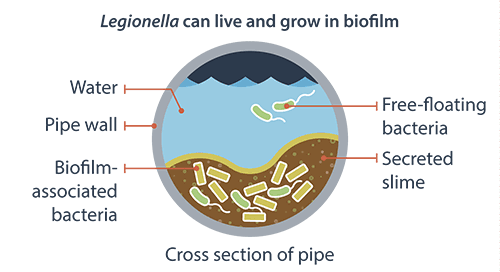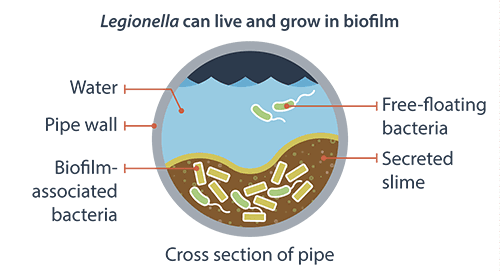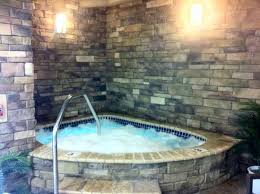How to Prevent Legionnaires' Disease in Your Hotel
At a time when Legionnaires’ Disease outbreaks throughout the United States have increased fivefold, more people are being sickened by the Legionella...

Today is the last day of Legionella Prevention Month. With that in mind we want to highlight a few more strategies you can implement to keep your buildings and facilities safe from Legionella bacteria. Legionella bacteria is most commonly found in water. Legionella bacteria cause Legionnaires’ disease, a potentially fatal type of pneumonia contracted by inhaling water droplets containing Legionella bacteria. Anyone can develop Legionnaires’ disease, but those who are elderly, smokers, or have impaired immune systems are at a higher risk.

Factors That Lead to Legionella Growth
A variety of internal and external factors can lead to a Legionella problem in your building, including:
Construction
Water main breaks
Changes in municipal water quality
Biofilm
Scale and sediment
Water temperature fluctuations
pH fluctuations
Inadequate levels of disinfectant
Changes in water pressure
Water stagnation
Controlling Water Temperatures
Legionella bacteria grows best within a certain temperature range (77° F - 108° F). Keep water outside the range for Legionella growth, keep your cold water cold, and hot water hot.
Make Sure Disinfectant Amounts Are Right
When there is a decline in disinfectant levels in your building water systems, Legionella can grow. Your building water supply may need long-term supplemental disinfectants added to the water to limit Legionella growth. Legionella Solutions has a natural, fast and cost-effective preventative program called HydroTreat. Our revolutionary solution is an all in one solution to prevent biofilm growth in your building.
Prevent Stagnation
When water does not flow, the results can lead to biofilm growth. It is important to fully understand the flow of water in your building in order to identify areas of risk where water may become stagnant and allow Legionella bacteria to grow.
Operate and Maintain Equipment
Maintaining and operating your building’s equipment effectively will help prevent biofilm from contaminating your water system which provides a habitat and conditions for Legionella growth. If you are unsure on how to keep your equipment operating effectively, contact IWC to receive a Free Water Analysis.
Monitor External Influences
Construction, water main breaks, and changes in municipal water quality are all important factors to consider when monitoring Legionella growth. Monitor these changes and identify how they could affect your entire building water system.
Where Legionella Can Grow or Spread
Certain devices within your building or facility can spread contaminated water droplets. These following examples should be monitored as potential sources for Legionella growth:
Hot and cold water storage tanks
Water heaters
Water hammer arrestors
Expansion tanks
Water filters
Electronic and manual faucets
Aerators
Faucet flow restrictors
Showerheads and hoses
Pipes, valves, and fittings
Centrally installed misters, atomizers, air washers, and humidifiers
Nonstream aerosol-generating humidifiers
Infrequently used equipment including eyewash stations
Ice machines
Hot tubs
Decorative fountains
Cooling towers
Medical equipment (such as CPAP machines, hydrotherapy equipment, bronchoscopes)
Water management plans and testing for Legionella bacteria are imperative for keeping your employees, customers and visitors safe. As responsible corporate stewards, building owners want to protect the people who occupy their facilities as well as their investment. Through development and maintenance of a Legionella water management plan and Legionella testing plans tailored specifically to your facility’s unique needs, we can help you achieve this goal.
Contact IWC to see how we can help you in the fight to prevent Legionella growth in your buildings’ water systems. #PREVENTLEGIONELLA
Content Source: Center for Disease Control and Prevention

At a time when Legionnaires’ Disease outbreaks throughout the United States have increased fivefold, more people are being sickened by the Legionella...

What is Legionnaires’ disease? Legionnaires’ disease – also called Legionellosis and Legionella pneumonia – is a severe type of pneumonia or lung...